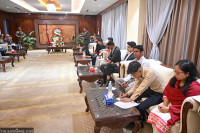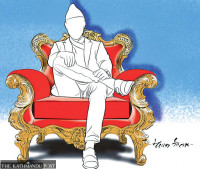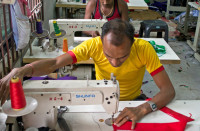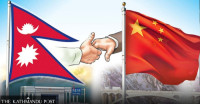Opinion
New face of BRI
Xi’s keynote shows that there has been a polar shift in the global strategic balance.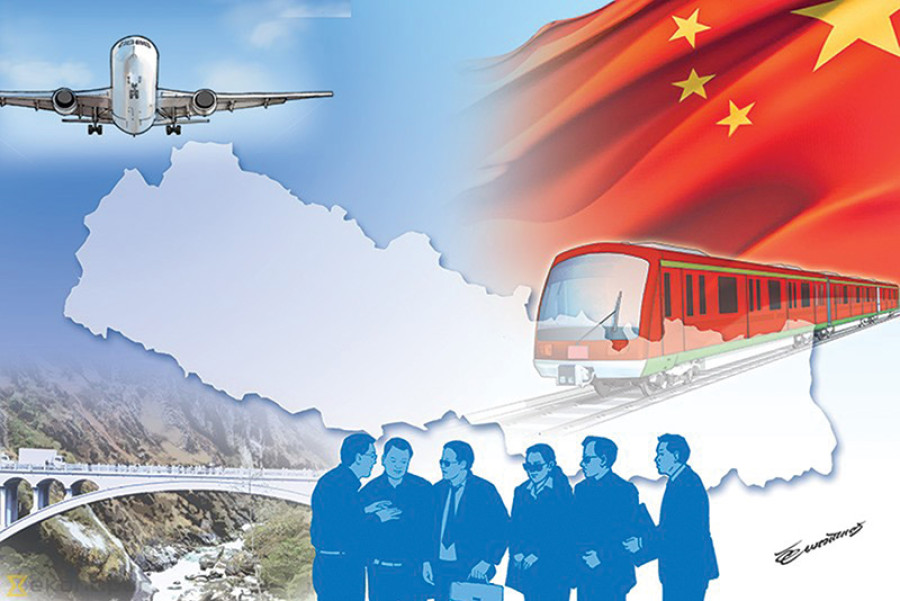
Achyut Wagle
If Chinese President Xi Jinping’s keynote address to the Second Belt and Road Forum for International Cooperation in the Chinese capital Beijing last Friday is any indication, a polar shift in the global strategic balance has indeed become a reality. Antithetic though, the leader of the world’s largest communist country Xi plays the most vociferous protagonist for global open market and free trade, the narratives thus far almost monopolistically employed for global policy homogenisation by the Western powers that be.
Xi promised that China would open up its market, enter into free trade agreements with more countries, increase imports of goods and services on a larger scale from the rest of the world and substantially slash its negative list on imports. “China is also willing to import more competitive farm produce, finished products and services and will allow foreign investors to operate businesses in more sectors with a controlling interest or full stake,” he declared. Specific reference to the opening of imports of farm products to China may be viewed as strategic counter to fortified protectionism incessantly practiced by the US and other developed countries, particularly, on agricultural and animal products.
Extended validation
The Belt and Road Initiative (BRI) that completed six years of conceptualisation by President Xi as the flagship instrument for China’s international engagement has now become not only the world’s most overarching paradigm in global economic diplomacy but also the most divisive and controversial infrastructure-focused investment spree, ubiquitously impacting on the present day world order.
Such divisions were evident in the pattern of participation in the Second Belt and Road Forum that concluded last Saturday. Out of the 36 heads of state or government that participated in it, the largest number was from Europe, followed by Southeast Asia and Africa. From South Asia, only Nepal and Pakistan participated at the highest level. European countries like Italy or Greece participated hoping for a Chinese rescue of their desiccated coffers and other Western countries saw business opportunities through renewed engagement.
China is investing hugely in physical infrastructure development in more than a dozen African economies. It intends to develop economic corridors, similar to the China-Pakistan Economic Corridor, with Southeast Asian neighbours like Laos, Indonesia and Myanmar. The leaders of all these countries and regions were Beijing’s most obvious guests during the Second Belt and Road Forum. Out of the 100 countries said to have been represented by business delegations, the participation of countries like Singapore, seen as a close ally of the US and the West, surprised many. In addition, Singapore also entered into several key agreements with China on market cooperation, trade, green investment principles and, perhaps most importantly, the 13-country Maritime Silk Road cooperation framework.
One of the most valuable encouragements to the Chinese establishment is the participation and increased partnership of global multilateral institutions like the UN, International Monetary Fund, World Bank and Asian Development Bank, among several others. The presence of UN Secretary-General António Guterres and International Monetary Fund Managing Director Christine Lagarde in Beijing for the Second Belt and Road Forum provided much needed validation to the BRI. An official declaration on behalf of China at the conclusion of the Second Belt and Road Forum claimed that it signed deals worth $64 billion with the participating countries which may be viewed as growing interest of the ‘parties’ to engage with the BRI.
There is also a pattern of the set of countries that boycotted or deliberately skipped the event. The first are those competing for strategic dominance or wish to contain China from spreading its wings of influence, like the US at the global and India at the continental levels. The second set of countries that did not participate were either known partners of the US or those highly apprehensive about the BRI-abetted ominous debt trap hypothesis. The absence of the third set of countries like Sri Lanka and Bangladesh was more conspicuous since they are already ‘engaged’ partners of the BRI, but their political leaders are criticised at home for entering into China’s ‘beggar thy neighbour diplomacy’.
Rolling back
During the Second Belt and Road Forum, President Xi and the entire Chinese leadership made efforts to allay the globally contagious debt trap concern and counter criticism on lack of transparency in choosing, investing and administering projects under the BRI. First, instead of clubbing everything the Chinese do abroad under the BRI, Xi in his keynote appeared to refocus the BRI primarily on ‘building infrastructure of high quality, sustainability, risk resilience, reasonable pricing, inclusiveness and accessibility’ to better integrate the (developing?) countries into the global supply, industry and value chains.
Though unilaterally, the Chinese Ministry of Finance, in the final declaration of the Second Belt and Road Forum on April 27, prescribed a ‘debt sustainability framework for participating countries of the Belt and Road Initiative’ to promote sustainable financing and sustainable and inclusive growth. This response may easily be alluded to the Chinese realisation of the debt-trap criticism.
Third, China has proposed to ‘co-organise a seminar on business integrity and compliance with the World Bank, and hold an anti-corruption seminar for Belt and Road countries’. The final declaration also announced that a Multilateral Cooperation Centre for Development Finance has been established involving about a dozen development finance institutions of global repute including the World Bank. These are clear signals that the Chinese leadership is prepared to comply with the best corporate governance practices in international investments, albeit with some critical Chinese strings still attached.
Nepal and the BRI
China appears to be determined to engage Nepal only through a single window of the BRI. Despite keen interest, Nepal did not receive an invitation to participate in the Boao Forum for Asia held in Hainan, China in March. Nepal’s prime ministers attended the forum in 2016 and 2017, but there has not been any high-level participation since then. In spite of this humiliation of sorts, President Bidya Devi Bhandari chose to participate in the Second Belt and Road Forum. A section of the Nepali intelligentsia also seems to be buoyed by the signing of the transport cooperation agreement with China during her visit. China also signed similar agreements with the governments of Pakistan, Liberia, Georgia, Belarus, Armenia, Saudi Arabia, Laos and Kazakhstan. Nepal, along with 27 other countries, also agreed to be part of the Belt and Road Energy Partnership established by China at the conclusion of the Second Belt and Road Forum.
China’s increasingly lukewarm response to Nepal, like in Boao, is often attributed to the extremely lethargic approach of our own officials in finalising and forwarding the projects considered for financing, mainly under the BRI. If that is the case, no new agreement like this is likely to benefit Nepal.
Geopolitically, India’s continued boycott of all BRI-related forums also pushes Nepal into serious diplomatic unease. There is a general perception that the Indian policy response to Nepal is likely to change fundamentally after a new government is sworn in within a month in Delhi, after the completion of the ongoing parliamentary elections in India. As such, the BRI might just prove to be an additional ‘hot potato’ for Nepal in managing her regional diplomacy in the foreseeable future.
Wagle tweets at @DrAchyutWagle.




 20.12°C Kathmandu
20.12°C Kathmandu
